
Author: John Marks
Claudio Arrau plays “Gnomenreigen” by Franz Liszt. Live in Carnegie Hall (1953)
Claudio Arrau (1903-1991) was a Chilean pianist noted for his very wide repertory. He studied in the Stern Conservatory in Berlin. His teacher there, Martin Krause, had been a student of Franz Liszt’s–it’s hard to get a pedagogical lineage that is more direct than that. Young Claudio had learned Liszt’s Transcendental Etudes by the time he was 11 years old. Soon after, Claudio was making piano rolls for player pianos.
In the early 1950s, Carnegie Hall made some promotional films–perhaps intended to be used as television broadcasts. One of these promotional films is of the mature Claudio Arrau playing a very demanding Liszt solo work, the “Gnomenreigen” (Dance of the Gnomes), which is one of Liszt’s Two Concert Études (Zwei Konzertetüden), S.145. By the way, I was a little surprised to see that Arrau was playing a Baldwin piano, and not that other brand–and I don’t mean Yamaha!
On August 17, 1982, the music conglomerate Polygram’s Philips label released a Digital Audio Compact Disc of Chopin Waltzes performed by Claudio Arrau. That was the first-ever classical-music CD. From piano rolls to the first classical compact disc–what an amazing life. Of course, these days, you can pick up the CD from an Amazon non-profit vendor such as Goodwill for all of about four dollars.
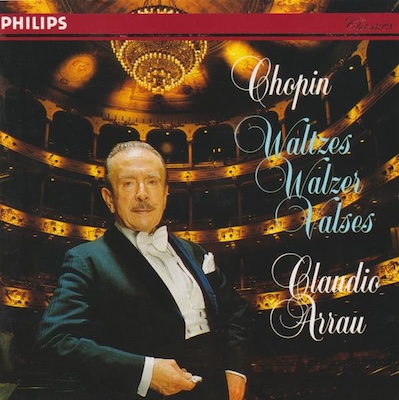
# ##
Say “Saluton!” To “Future Audiophile.”

Jerry del Colliano started out as a music student, studying music and Music Business courses in tandem. Then, in the 1990s, he was hired by Christopher Hansen Ltd., the legendary Los Angeles high-end audio dealer. In a twinkling, Jerry’s passion for music catapulted him into the upper echelons of audio retailing, being a standout seller of Wilson Audio Specialties loudspeakers. Del Colliano later worked for (the man; the myth; the legend!) Mark Levinson, at Cello Music and Film, also in Los Angeles.
He later went into media and web journalism, publishing AudioRevolution.com, HomeTheaterReview.com, and AudiophileReview.com. More recently, he has launched a new webzine targeting younger music lovers and the audiophile-curious.
The “Unique Selling Propositions” of Future Audiophile are that audiophile “terms of art” (or, if you prefer, jargon) are usually linked to definitions or explainers; and that there is a standard template that all equipment reviewers must follow.
The Future Audiophile review template is so Socratic in method that it gives me flashbacks to law school… but it serves the purpose of reining in authorial flights of fancy (or, recountings of free trips to Sardinia for molto gelato gratuito–ahem).
Examples:
What Makes the Parasound Halo P 6 So Special?
Why Should You Care About the Parasound Halo P 6 ?
Some Things You Might Not Like About the Parasound Halo P 6
Listening to the Parasound Halo P 6 Preamplifier…
Does the Parasound Halo P 6 Have Any Resale Value?
Who Is the Competition for the Parasound Halo P 6?
Final Thoughts on the Parasound Halo P 6 Preamplifier
… you get the idea.
In an email, del Colliano told me that he is “aiming to reach younger and more diverse fans who are looking more for the lifestyle benefits of listening to music, as opposed to some of the more voodoo-inspired black magic that the hobby sometimes flirts with.” He also told me that Future Audiophile has “reviewers who have over 40 years of audiophile experience, as well as audiophile reviewers who just turned 40 years old.”
So, I wish them much success.
Note, I do not plan to write for Future Audiophile, in that I have been neglecting my own blog, and I have a hugely important recording project in the works.
# # #
JBL L100 Classic Loudspeaker
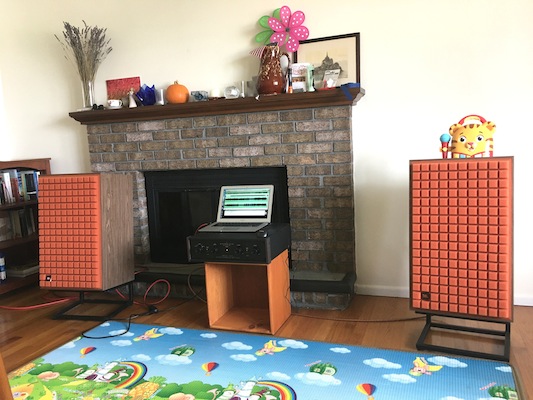 Photo by John Marks
Photo by John Marks
JBL’s L100 Classic loudspeaker has a United States MSRP of $4000/pr. (stands not included).
However, if you want to make them sound like the proverbial “a million bucks,” here’s how to do it:
(1) Connect a pair of JBL L100 Classics to your amplifier.
(2) Subscribe to the Qobuz streaming service (they have a risk-free 30-day trial offer). Feed that signal to your Digital to Analog Converter.
(3) Dial up the 24-bit hi-res version of Joel Fredericksen & Ensemble Phoenix’s astonishing feat of creativity and musicianship, the Nick Drake tribute album Requiem for a Pink Moon.
Wow. The first 60 seconds of Track 1 should convince you. The L100s sound like a million bucks. I unhesitatingly recommend audition of the L100 Classic to anyone shopping for loudspeakers in their price tier.
However, my take on the reality (of all such situations) is that every loudspeaker ever designed incorporates tradeoffs. To get this, you have to give up that. Even if the only thing you are giving up on is affordabilty.
The L100 Classic is remarkably affordable, considering its dynamics and its bass performance. If I were still writing for Stereophile magazine, I’d put it in for the coveted “$$$” high-value indication in the Recommended Components List.
But when you design a loudspeaker that has perhaps 80% of the bass and dynamics of loudspeakers costing four or five times as much (or even more; I am talking about loudspeakers in the $15,000 to $28,000 range), but at 20% of the cost of the more expensive loudspeakers, there are, of course, going to be tradeoffs and compromises. That’s my take on the reality.
More on Pink Moon, more on the social and cultural context of and the impact of the original L100, and more comments on the sound of the new one, after the jump. Continue Reading →
Graham Audio Chartwell LS6 Loudspeaker
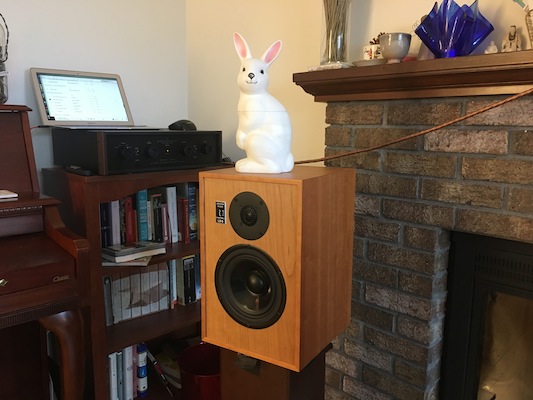 Photo by John Marks
Photo by John Marks
[Note: The bunny atop the LS6 is a gesture in memory of Art Dudley. I am certain that Art would have loved this loudspeaker. I think that it is one measure of Art’s impact upon the high-end audio community that most people who read this review will immediately grasp much of what this loudspeaker is all about, just from reading only that.]
Graham Audio’s Chartwell LS6 loudspeaker is a labor-of-love audio product that is seriously competent in terms of engineering, but also characterful in terms of its presentation of music—especially the human voice. Therein lies the complexity.
The Chartwell LS6 evokes complex reactions in part because of its UK BBC “thin-wall cabinet” design heritage. However, heritage is not destiny. In any event, the LS6 is more of a “clean-sheet-of-paper” design than a slavish copy of a loudspeaker that is nearly 50 years old.
The primary engineering difference is that the LS6 is a ported-enclosure design, whereas the iconic BBC LS3/5A is a sealed-box design. Therefore the LS6 is, to me, more of an updating of the idea of a “Classic BBC-Designed Studio Monitor” than it is an updating of any particular loudspeaker.
The Chartwell LS6 deserves to be judged in comparison to its older BBC-derived relatives—but also, by today’s standards as well. Either way, it is a winner. In addition, it is solid value for money.
A philosophical diversion or two follows, after the jump. Continue Reading →
Caitlin Flanagan on “A Charlie Brown Christmas”

I have always been impressed by the journalist Caitlin Flanagan, but her recent memoir and “think piece” on the remarkable staying power of a TV special from 1965 featuring the cast of the comic strip Peanuts is one of the best such things I have ever read. Just like the Charlie Brown Christmas special, it’s an instant classic.
After the jump, I quote generously from the intro. But I leave off quoting before I get to the best part, which is her explanation of how that instantly-accessible jazz music ended up in the mix. So, please click through to read the whole article on the Atlantic website.
But before that, I want to note that Ms. Flanagan has been battling Stage IV cancer with preternatural courage. You may wish to read I Thought Stage IV Cancer was Bad Enough… (then came a pandemic, during the Presidency of Donald Trump).
Clickez ici, SVP! Continue Reading →
Noam Sivan: Improvisations upon the Goldberg Variations, BWV 988
I am indebted to David P. Goldman‘s wonderful Tablet magazine article on the place of classical music in Israeli society for introducing me to the young pianist Noam Sivan, who is recovering the lost art of classical-piano improvisation.
Born in 1978, Sivan has taught at the Curtis Institute and the Juilliard School. Currently he is Professor of Piano Improvisation at the State University of Music and Performing Arts Stuttgart, where he has opened a Master’s-Degree program in classical-piano improvisation.
His album Chopin & Improvisations is downloadable from his website.
# # #
Say “Hello” to Hagerty Media!
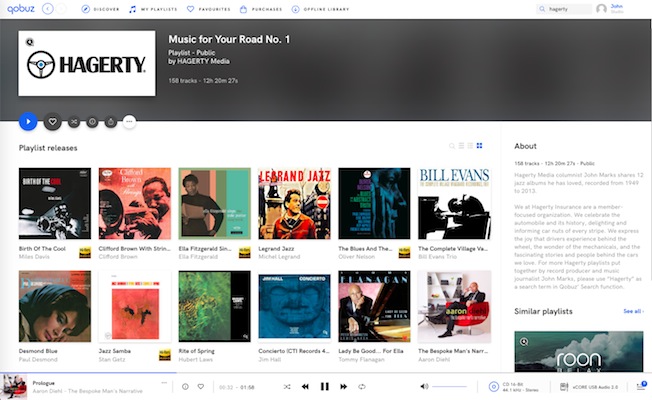
I have a new writing job, and I am having lot of fun with it.
I have started writing a column for Hagerty Media, the media and communications division of the Hagerty collector-car insurance business. My new column is called “Music for Your Road.” The (Somewhat) Unique Selling Proposition of my column is that all the recordings I recommend are gathered in a public playlist hosted by the Qobuz streaming service.
So, if you go to Hagerty’s Media website (which is public-access) to read my new column, at the end there is a link that guides you to my first “Music for Your Road” Qobuz playlist. More after the jump!
Brahms: Violin Concerto; Sergey Khachatryan, Frankfurt Radio Symphony, Andrés Orozco-Estrada
Courtesy of frequent Audio Asylum classical bulletin-board poster Todd Krieger, here’s an outstanding Brahms violin concerto from a violinist I had been unaware of, Sergey Khachatryan. I should not have been unaware, in that Sergey Khachatryan was awarded first prize at Belgium’s Queen Elizabeth Competition in 2005.
This performance is full of depth, nuance, subtlety, and grace! And the conductor and the orchestra are completely on board with all that. In particular, the dynamic shadings of the interplay between soloist and orchestra are such a revelation. Phrasing is also blessed with such innigkeit. And Khachatryan has amazing technical resources. But exactly which kind of demands this concerto makes upon technical (and musical) resources, I offer an opinion on, after the jump.
Bavarian Broadcasting “BR-Klassik” Internet Radio

I don’t understand much spoken German at all. So it might be surprising that my favorite classical-music internet radio station is Bavarian Broadcasting’s BR-Klassik channel.
The reason is simple. BR-Klassik’s programming is unusually diverse, and therefore more interesting to me. To tune into the “br.de” streaming service, all you have to do is click here: https://www.br.de/index.html. Once you are on the home page, scroll down to here:

And click on the tile with the BR-Klassik logo. A player window will open that connects you to the classical-music channel. Bavarian households pay about $250 a year for public broadcasting, but now you are getting it for free!
More commentary from me, after the jump. Continue Reading →
Moonriver Audio Model 404 Stereo Integrated Amplifier
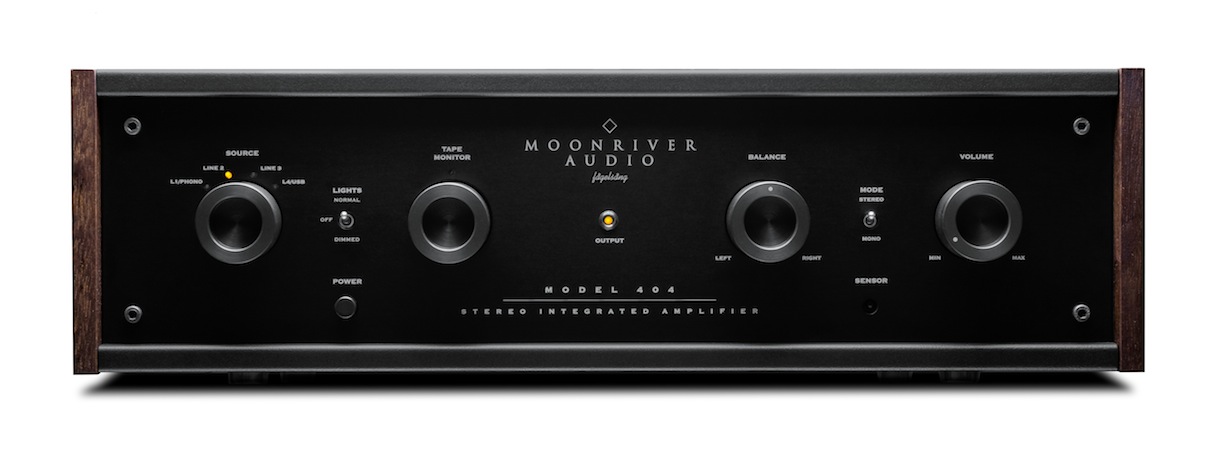
The Moonriver Audio Model 404 is a solid-state stereo integrated amplifier with a rated output of 50 Watts per channel. The Model 404 combines a preamplifier stage that consists entirely of discrete devices (and therefore, there are no integrated-circuit chips in the preamplifier), and a power-amplifier stage that is Class A/B linear (and therefore, the Model 404 is not a Class-D digital-switching amplifier).
The company name of Swedish high-end-audio newcomer “Moonriver Audio” is a tribute to the song “Moon River,” from the Audrey Hepburn (1929-1993) film Breakfast at Tiffany’s. “Moon River” won for Henry Mancini (music) and Johnny Mercer (lyrics), the 1962 Academy Award (“Oscar”) for “Best Original Song.” (The screenplay was based on a novella by Truman Capote. He cried all the way to the bank.)
Therefore, the first important point is: the Moonriver 404 is hand-built in Sweden, apparently by someone who has fond memories of Audrey Hepburn.
(And so, therefore, the Moonriver 404 is not built in China by people who—most likely—do not have fond memories of Audrey Hepburn.)
The second important point is that the Moonriver 404 (US MSRP $3500; but there are optional modules) is a tremendously serious audio product. As far as I can tell, the Moonriver 404’s only “flaw” is that it never calls attention to itself. However, that’s because it only calls attention to the music.
More on what I mean by “a tremendously serious audio product,” after the jump. And more about Audrey Hepburn!
Continue Reading →


